Welcome to Week 1! It's been a long time since our weekly Tuesday column, and how I have missed it. There's also nothing like the first few weeks of the NFL season. We don't know anything right now, so each take is new, exciting and potentially egregiously dumb. If Week 1 was destiny, then the Jets and the Steelers would be two of our most high-powered offenses (don't believe that), and Bills-Ravens would be the best game all season (that one's probably true).
On Tuesdays, I try to spin the previous week of NFL football forward, looking at what the biggest storylines mean and what comes next. We'll break down a major trend or two and highlight some key individual players. There will be film. There will be stats (a whole section of them). And there will be fun.
This week, we're going to rank the top Week 1 performances from quarterbacks who joined new teams, take a closer look at the Giants' QB situation and size up a few interesting passing game tendencies we saw Sunday. Let's dive in.
Jump to a section:
The Big Thing: Ranking top Week 1 QB debuts
Second Take: The Giants can't go to Dart just yet
Mailbag: Answering questions from ... you
Next Ben Stats: Wild Week 1 stats
Every week, this column will kick off with one wide look at a key game, player or trend from the previous slate of NFL action. What does it mean for the rest of the season? This week, we ranked five of the most intriguing quarterback debuts with their new teams.
The Geno Smith-Chip Kelly pairing is going to be appointment television. On Sunday against the Patriots, the Raiders were first in the NFL in explosive pass rate at 26.3%, second in air yards per attempt at 10.3 and second in play-action rate at 34.2% -- all while being blitzed 47.4% of the time. Smith ended the day 24-for-34 for a whopping 362 yards.
That was a lot of numbers. Let me summarize: The Raiders went for big plays and hit them, over and over again.
Smith has always been a fearless field general, and Kelly played into his hand nicely, creating isolation opportunities with deep-breaking routes. Smith is as good as any quarterback in the league at pinning the ball on routes that break deep downfield. He hit Jakobi Meyers on a deep comeback and Tre Tucker on a beautiful out route. But Smith also has the velocity and release speed to fire run-pass options into the intermediate levels of the field, and that works great in Kelly's motion-heavy play-action approach.
Smith's willingness to stand in the heat of the fire and keep pushing the ball got him in trouble at times with the Seahawks, and it will again in Las Vegas. He took four sacks and threw a pick on one of those deep opportunities. While the Patriots had to add additional bodies with a blitz to get home, future teams won't be as willing to create space downfield. In Week 2, the Raiders will see a polar-opposite defense from what Smith saw on Sunday in the Chargers and defensive coordinator Jesse Minter, who never blitzes and sits in deep zones.
But Smith turns his completions against pressure and blitzes into 20-plus-yard chunks and not 5-yard dump-offs, and that gives his offense the ability to have instant scoring drives. The Raiders' running game was worryingly poor, but one 38-yard catch and run for Brock Bowers set up a third-quarter field goal, and the aforementioned Tucker out-breaker for 28 yards set up a fourth-quarter field goal. Explosives are king in the NFL, and Smith has the sort of mentality that authors them.
To his credit, Kelly did a great job scheming up open receivers as the Patriots devolved into more and more coverage. I'm fascinated to see how this looks in Week 2 against such a different defense, and Las Vegas' offensive line looks as if it could be a limiting factor. But for Smith's part, the Raiders paid a third-round pick and a contract of $37.5 million per year for a solid veteran starter at quarterback; in his first start, he easily cleared that bar. I can't promise the Raiders will be actually good, but again, you're going to want to get these guys on your TV screen.
When the Steelers signed Rodgers, the theory was that he would be good enough to get their otherwise-solid team over the playoff hump. Play great defense, run the ball well (though Sunday was not inspiring to that end) and get a couple of splash throws from the wily veteran.
Well, Pittsburgh has to feel good about that after Week 1. Rodgers had a classic Rodgers-ian throw -- a gorgeous 50-50 ball on the sideline to Calvin Austin III -- but also operated within the bounds of the offense against the Jets. He had nine dropbacks of under center play-action in this game, nearly matching his single-game best (10 snaps) across the past five seasons. Such dropbacks are a staple of an Arthur Smith offense but have largely been spurned by Rodgers, who prefers to keep his eyes on the defensive backfield, which is hard to do when faking a handoff to a running back.
Nifty design here. Watch how the motion from Austin into the formation moves the corner off the line of scrimmage, forcing him to play flat-footed and from depth when Austin explodes out of the backfield. Rodgers hits the run fake, gets his head back around and makes a classic, effortless throw on the move.
pic.twitter.com/hFC6k0Hnq1
— Good Clips (@MeshSitWheel) September 8, 2025
This was one of Rodgers' eight pass attempts that went for more than 15 yards. It was well-schemed but, obviously, pretty wide open; the corner stumbled in the route stem and never recovered. In fact, seven of Rodgers' eight big throws were the result of a coverage bust (whether it be a miscommunication or a DB falling down) or a missed tackle.
Some of that can still be to the Steelers' credit. The Jets struggled to pass off crossers, which led to an 18-yard DK Metcalf catch-and-run to get into the red zone, and a 22-yard Ben Skowronek touchdown. The receivers had 8.7 and 8.5 yards of separation at the catch, respectively, per NFL Next Gen stats. But the Steelers were going no-huddle on the Metcalf catch, something Rodgers does extremely well. Defensive miscommunications occur more often in the hurry-up offense, which is partly why Rodgers likes it so much.
Generally, the Jets' secondary had a nightmare day. Rodgers picked on 6-foot-1 cornerback Brandon Stephens, who was one of the worst jump ball DBs in the league last season, and he got summarily dunked on by the 5-foot-9 Austin. The Steelers won't play a defensive backfield this mistake-prone very often, and the margins will become accordingly thinner.
So, I'm not over my skis with a Rodgers reemergence, not by a long shot. He certainly is still capable of playing point guard in a smart and efficient passing game built on line of scrimmage audibles and quick releases, but his lack of pocket escapability remains a weighty cap on this offense's ceiling. Rodgers also had the third-highest explosive pass rate on the day (23.5%) while throwing the most screens (30% of dropbacks) and the third-shallowest passes overall (4.5 air yards per attempt). That explosive play rate is not going to stick.
Rodgers is doing the right things and looks more amenable to the system than he did at the end of his Packers days and/or with the Jets. Steelers fans should rightfully take heart. I'm just not sure doing the right things will bear as much fruit every week as it did Sunday.
The excellence of Fields' first game with the Jets is not in what was there but rather in what wasn't there: negative plays.
In Fields' three seasons with the Bears, risk management was his biggest issue. He took a sack on 10.9% of dropbacks -- the highest rate of any quarterback over that stretch -- and held the ball for a league-leading 3.34 seconds per dropback. The ball never came out fast, if it came out at all; his 12.4% scramble rate also led the league, though that wasn't necessarily a bad thing.
But Fields always struggled to calibrate the risk to the reward. For every splashy downfield completion or heroic escape, he had two bad sacks and three missed throws. Fields tried too often to be Superman when Chicago's offense needed Clark Kent.
This improved a bit in Pittsburgh -- his interception rate went from 3.1% to 0.6%, for example -- but the Steelers' offense wasn't built for him. It was built for Russell Wilson, and Fields never fit. This offense in New York? This was built for Fields. On Sunday against his former Steelers team, he had nine designed runs, more than all but one game from his Pittsburgh tenure. He was given intermediate and downfield routes from the pocket instead of exclusively seeing them on play-action boots and rollouts. That allowed him to throw from balanced bases and use his premier velocity to hit closing windows.
The Jets' offense wasn't just built to his strengths; it also hid him from his weaknesses. Tanner Engstrand, who called perhaps the best game of any new coordinator (offense or defense), committed to protecting Fields from the third-and-longs that invite the quarterback's worst tendencies. The Jets called a run on 58.1% of their plays, producing a run rate 21.3% over expectation given the downs and distances they faced, per NFL Next Gen Stats. That would have been the ninth-heaviest game for designed runs in the NFL last season.
The commitment to the ground game insulated Fields from clear passing downs on which the fearsome Steelers pass rush could tee off. Fields had six third-down dropbacks and needed to gain an average of 4.6 yards -- the shortest distance to the sticks on third down for a start in his career. He converted three of the six, and he also converted a fourth-and-1 for a touchdown.
Again, this was about insulation. The Jets handed the ball off on a third-and-11 and a third-and-17 -- a hugely cautious approach that will continue to hurt them in close games. But just as they are cognizant of Fields' particular demons, so is he, and he looked sharper managing the pocket than he ever did in Chicago. Watch Fields pick his way through tight spaces here, always with two hands on the ball, while keeping his head up and looking for throwing opportunities.
Thought Justin Fields did a great job avoiding negatives.
— Benjamin Solak (@BenjaminSolak) September 8, 2025
Great pocket management here: two hands on ball the whole way, doesn't run into the Heyward contain, patiently finds an alley, good throw on move.
As an aside: look at the recovery athleticism on Fashanu (74). Wheew. pic.twitter.com/ekR0cq2Si8
Fields is not a fixed player -- not yet, anyway. He is still a tick later to his reads than he should be, though he has the ball velocity to make up for it. He tunneled Garrett Wilson a few times too many, but that's defensible, given the rest of the Jets' wide receiver room. Still, for the first time since Fields entered the league, it really seems as if an offensive coach is willing to tailor the system and playcalling to leverage Fields' strengths and color around his weaknesses. This shouldn't have been hard elsewhere, even though it was in both Chicago and Pittsburgh. But things make sense now under Engstrand in New York.
One offseason and one start won't fix a quarterback entirely. But this is how the reclamation process started for Sam Darnold with Minnesota and Baker Mayfield in Tampa Bay, by putting them in offenses that worked for them, letting their confidence build and expanding their responsibilities over time. A good foundational stone was laid in New York in Week 1. Keep building in Week 2.
It's difficult to overstate how badly the Dolphins' secondary played Sunday. Cornerback Jack Jones had multiple coverage busts on the first drive. Miami struggled tremendously in zone coverage by allowing receivers to get wider than their widest defender. Colts running back Jonathan Taylor motioned out wide and had an 18-yard catch-and-run on a checkdown because nobody traveled with him. Mo Alie-Cox had a 20-yard catch-and-run on a quick out because, again, the flat defender just gave him unimpeded access to the sideline. These are worse than preseason mistakes. These are second-half-of-a-preseason-game mistakes.
By the second quarter, when it became evident that his defensive backfield had no shot, coordinator Anthony Weaver started to crank up the blitz in the hope of disrupting Jones and causing a turnover. This kind of worked. Jones' success rate was 65% (preposterously good) without additional rushers as compared to only 56% (just really good) when Weaver sent extras. The issue for Miami was how well Colts coach Shane Steichen called the offense, giving Jones quick options (2.33 seconds time to throw against 16 blitzes) to a variety of strong yards-after-catch receivers.
8: That's how many games the Ravens have lost in the past five seasons in which they had a win probability above 90%. The next closest team has five.
The games are as follows:
2021 Week 1 at Raiders: Baltimore hit a go-ahead field goal with 42 seconds left while the Raiders had no timeouts; it ultimately lost in overtime.
2022 Week 2 vs. Dolphins: Baltimore gave up 28 fourth-quarter points.
2022 Week 4 vs. Bills: Baltimore led 20-3 at the two-minute warning of the first half; it still lost 23-20.
2022 Week 12 at Jaguars: Baltimore was up 19-10 and had the Jaguars facing a fourth-and-8 with less than nine minutes left ... and lost. (Like Sunday night's opener, this game also included a fourth-quarter fumble, this time by Gus Edwards.)
2023 Week 3 vs. Colts: Baltimore sacked Gardner Minshew for a safety to go up 19-16 just before the two-minute warning, but it then had to punt the ball away and ended up losing in overtime.
2023 Week 10 vs. Browns: Baltimore led 31-17 with 11 minutes left. Lamar Jackson threw a fourth-quarter pick-six in this one, though it was batted at the line. (Does that make anyone feel better?)
2024 Week 2 vs. Raiders: Baltimore led 23-13 with 12 minutes left. It managed to lose in regulation.
2025 Week 1 at Bills: Baltimore encountered Josh Allen.
There are two things that bear underlining. In the same time frame, the Ravens have the fourth-most games in which they hit that 90% threshold; they're just winning those games at an 83.3% clip instead of the 90% clip you might expect. In other words: It is objectively good that the Ravens are building big fourth-quarter leads, even if it is objectively bad that they blow them. The goodness and badness don't cancel each other out here, though. It is collectively, overall, bad.
The second thing is six of these eight games came in the first month of the season. Of course, the Ravens have lost heartbreakers later in the season that failed to meet our 90% win probability threshold, but when it comes to their particular knack for choking away big leads, this seems to be an early-season issue. Is it a lack of late-game focus or situational management that gets ironed out as the season goes on? I'm not sure. Just thought it was worth the flag.
Great game last night, though. Let's do that again in January.
Newer articles
Older articles
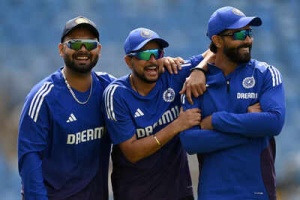 Gavaskar Calls for Kuldeep Yadav's Inclusion in Second Test; Questions Bumrah's Fitness After Leeds Loss
Gavaskar Calls for Kuldeep Yadav's Inclusion in Second Test; Questions Bumrah's Fitness After Leeds Loss
 India's Harshit Rana Released from Test Squad Ahead of Second England Clash
India's Harshit Rana Released from Test Squad Ahead of Second England Clash
 Saucecode:
Nitish Rana Eyes Delhi Return After Disappointing Uttar Pradesh Spell
Saucecode:
Nitish Rana Eyes Delhi Return After Disappointing Uttar Pradesh Spell
 ICC Test Rankings: Pant Climbs to Career-Best, Bumrah Holds Top Spot as Root Reigns Supreme
ICC Test Rankings: Pant Climbs to Career-Best, Bumrah Holds Top Spot as Root Reigns Supreme
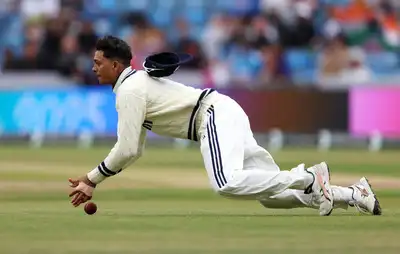 India's Fielding Woes Blasted by Ex-Selector After Test Defeat Against England; Calls for Patience Amid Transition
India's Fielding Woes Blasted by Ex-Selector After Test Defeat Against England; Calls for Patience Amid Transition
 Elon Musk’s AI company will make Grok chatbot more accessible, here’s how
Elon Musk’s AI company will make Grok chatbot more accessible, here’s how
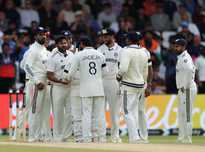 India's Batting Collapses Trigger Debate: Gambhir Defends Lower Order, Cites Missed Catches, Workload Management as Factors in Test Loss
India's Batting Collapses Trigger Debate: Gambhir Defends Lower Order, Cites Missed Catches, Workload Management as Factors in Test Loss
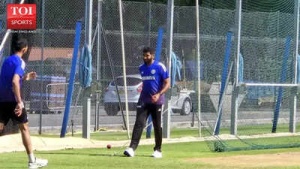 Bumrah's Birmingham Nets Spell: Accuracy, Angles, and Ambiguity Surround India Spearhead
Bumrah's Birmingham Nets Spell: Accuracy, Angles, and Ambiguity Surround India Spearhead
 IRCTC's AskDisha 2.0: AI Chatbot Streamlines Train Ticket Booking, Refunds, and Information Access
IRCTC's AskDisha 2.0: AI Chatbot Streamlines Train Ticket Booking, Refunds, and Information Access
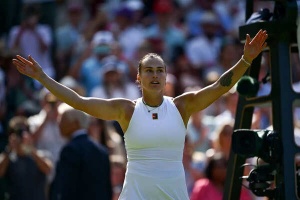 Wimbledon 2025: Alcaraz, Sabalenka, Fritz, and Anisimova Advance to Thrilling Semi-Final Showdowns
Wimbledon 2025: Alcaraz, Sabalenka, Fritz, and Anisimova Advance to Thrilling Semi-Final Showdowns